| By Guest Contributor, Tom Christiansen
Unless you’re just waking from a 20-year coma, you already know sage-grouse are a pretty big deal in the Cowboy State. Meanwhile, sharp-tailed grouse receive comparatively little attention even though their numbers too seem to be declining, especially in southeast Wyoming. It’s reasonable to ask why and what is being done to conserve this bird.
To recap for the coma victims, Wyoming has more sage-grouse than any other state, but populations have declined here and across the West. Because of the economic ramifications of a federal listing of the species as threatened or endangered, conservation efforts were undertaken to preclude the need to list the species have been unprecedented.
There are two subspecies of sharp-tailed grouse in Wyoming – the plains subspecies that occupy portions of both southeast and northeast Wyoming and the more rare Columbian subspecies that occupy the western flank of the Sierra Madres in southern Carbon County and a small portion of Teton County.
Compared to sage-grouse, sharp-tailed grouse are smaller; have a higher reproductive capacity, laying an average of 12 eggs per clutch versus 8 for sage-grouse; use more diverse habitats and eat more diverse foods, and are more tolerant of human disturbance and land-uses. Some of these differences, especially being more adapted to diverse habitats and being less sensitive to human impacts, mean that while plains sharpie populations have declined in numbers and they’ve lost range due to habitat loss, their populations are not yet considered to be at risk of extirpation. The status of the Columbian sub-species is of greater concern and it has been unsuccessfully petitioned for listing under the Endangered Species Act in the past.
In Wyoming, sage-grouse are intensively monitored using lek counts in the spring and hunter harvest wing barrels in the fall. Dozens of scientific research studies have been conducted to examine many aspects of sage-grouse life history and the stressors that negatively impact their population size. But for sharp-tailed grouse, lek monitoring is less rigorous and research projects have been few. Only one university-led research project has been conducted on plains sharp-tailed grouse and there were two natural history studies of the Columbians in the 1980s. However, Dr. Jeff Beck of the University of Wyoming is currently studying the habitat use, demographics, and genetics of the Carbon County birds, in part to determine if the birds are truly Columbians.
These birds are a northern extension of a larger population in northern Colorado. Highly fragmented populations of Columbian sharp-tailed grouse populations occupy mostly mountain shrub habitats in several states west of the Continental Divide. Only about 10 percent of the historic Columbian sharp-tail range is still occupied across the west. Columbians are not hunted in Wyoming. It is important to understand that Wyoming is on the outskirts of both Plains and Columbian sharp-tail range, much different than the situation for sage-grouse where Wyoming is Grand Central Station.
After years of monitoring and research, scientists and managers are keenly aware of the threats to sage-grouse and their population, and habitat trends. The upshot is that habitat loss and fragmentation due to human-caused disturbances such as tillage agriculture, energy development, and associated infrastructure, and the invasion of exotic annual grasses such as cheatgrass has driven sage-grouse numbers to where they are continually under scrutiny for whether or not they should be listed as a threatened species.
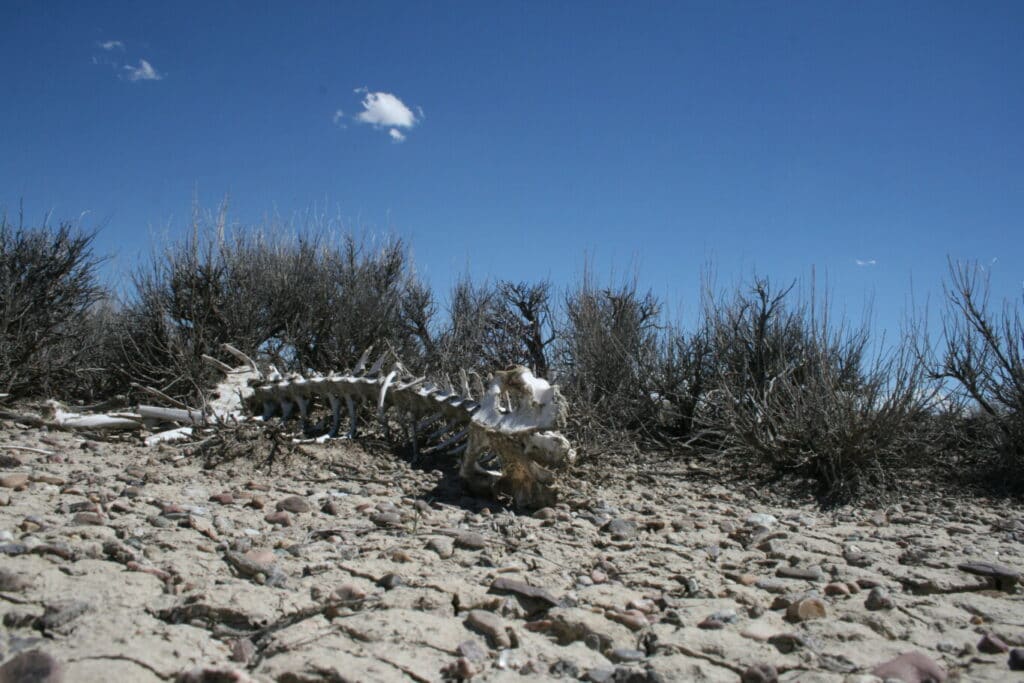
For plains sharp-tails, the primary threats across the range are the conversion of grassland to tillage agriculture, improper cattle grazing and the succession of grassland into shrubs or woodlands.
In Wyoming, in the only research project that studied plains sharptails, University of Wyoming researcher Doug Wachob concluded that the early years of the U.S. Department of Agriculture’s Cropland Reserve Program (CRP) was an absolute boon to the bird in the early 1990s. The cover and food provided by early succession CRP was preferred by nesting and brooding hens compared to adjacent wheat fields and shortgrass rangeland. Likewise, sharp-tail dancing grounds were also more closely associated with CRP than with wheat fields or shortgrass rangeland. The numbers and distribution of sharp-tailed grouse expanded in southeast Wyoming during those years. However, as the CRP lands matured through succession into less diverse grasslands losing much of the food forb (broad-leafed flower) component, sharpie numbers decreased and have remained depressed, except in infrequent years of well-timed precipitation and high nest success.
When asked about the status of sharpies in southeast Wyoming, longtime Wheatland area Wyoming Game and Fish Department (WGFD) biologist, Martin Hicks said, “I have seen a correlation in numbers as it relates to CRP stand age. The older the stand, the fewer sharptails observed during spring lek routes. Without a major overhaul of USDA’s Conservation Reserve Program, numbers will more than likely remain stable to decreasing.”
WGFD harvest reports for southeast Wyoming support the notion that there were more sharpies during the 1990s than in recent years as the average number of birds harvested from 2010-2019 (about 400) was half of the average annual harvest in 1990-1999 (nearly 800).
A larger sharp-tailed grouse population occupies Northeast Wyoming from the foothills of the Bighorns into the Powder River Basin, mostly north of I-90. Like the southeast birds, northeast Wyoming sharpies rely on grasslands, but rather than relying on CRP lands, the northeast birds use wooded draws and mixed grass-sagebrush habitats.
Gillette area WGFD biologist, Erika Peckham said the population of sharpies in northeast Wyoming fluctuates from year to year, but that she perceives the longer trend to be relatively stable. WGFD harvest data agree with Peckham. The average number of sharptails harvested in Northeast Wyoming during 2010-2019 (about 1,900) was 84% of the numbers harvested from 1990-1999 (2,300).
Some conservationists have asked why hunting seasons for plains sharptails in Wyoming have not been changed in response to lower numbers in the same way hunting seasons have become more restrictive for sage-grouse. The answer goes back to the differences in the biology and habitats of the birds. Sage-grouse have lower reproductive rates and largely occupy public lands making them more susceptible to over-harvest. Therefore the more restrictive hunting season we have is appropriate. Conversely, sharptails have higher reproductive rates and largely occupy private lands in eastern Wyoming where hunting opportunity is limited, making the structure of hunting seasons largely irrelevant. Sharpies are notoriously difficult to hunt later in the season as they gather in larger flocks and typically flush well out of range of hunters.
The Threat To All
“Whiskey is for drinking, water is for fighting over.” So goes the savvy saying attributed to Mark Twain and uttered across the arid American West for more than a century. But these days it seems most any topic is liable to be fought over due to the polarization and politicization of nearly every subject of discussion and the lack of civility associated with those discussions. And fighting over water is increasing in pitch and ferocity as patterns of precipitation and snowmelt change and water storage declines in the west’s large reservoirs and in July, Governor Mark Gordon announced he is convening a Colorado River Working Group to address this issue.
“The West finds itself facing unprecedented drought conditions and Wyoming must be prepared to address the potential future impacts of water shortages,” Gordon said.
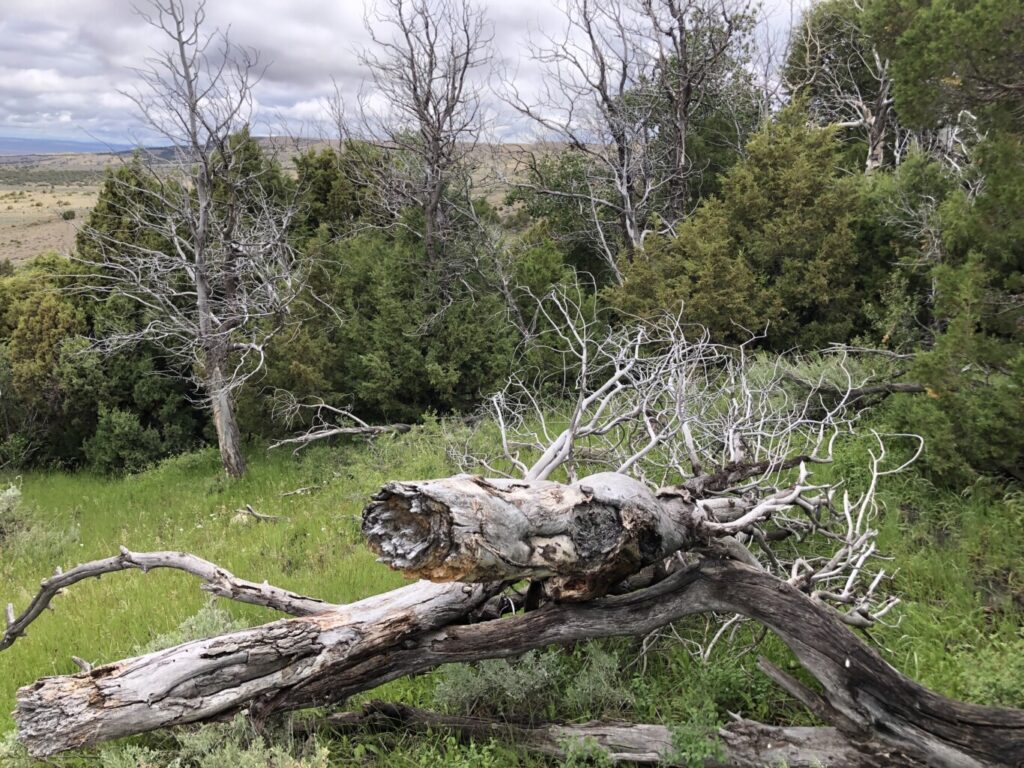
A driving force of the water debate, and a common threat to the habitats and demography of both sage and sharp-tailed grouse, is…climate change; a pair of volatile fighting words in Wyoming if there ever were any and I can already hear some keyboards clicking “close” and “delete”. While sadly controversial in public discourse, the science is increasingly clear and unequivocal that climate change is real, whether you call it “climate change” or “unprecedented drought”. Its effects are being felt now and will increase in severity in the coming years.
That individual weather events or short-term climate events such as drought impact upland bird nesting success, winter survival, and food availability has long been documented by managers and well-accepted by conservationists and hunters. Increasingly though, evidence is being collected that demonstrates severe weather events are becoming more intense and more frequent and that what was previously considered “drought” is now a persistent presence in much of sage and sharp-tailed grouse range. And, as a rule, drought is not good for grouse of either species, reducing forage and reducing cover thereby increasing vulnerability to predation and heat stress.
Climate change projections for the western United States suggest generally warming temperatures and stable or declining precipitation. Increased evapotranspiration under these conditions will likely cause shifts in vegetation to more drought-adapted species which would likely mean a reduction in the availability of preferred sage-grouse foods. More frequent drought will lead to more frequent and larger fires in the western United States. Exotic grasses such as cheatgrass also respond favorably to greater levels of CO2 in the atmosphere. Therefore recent trends in sagebrush conversion to exotic invasive grasslands will increase. Although some analyses conclude relatively mesic (wet) sagebrush areas will actually become wetter under some climate change scenarios. However, these areas may also dry out earlier in the summer.
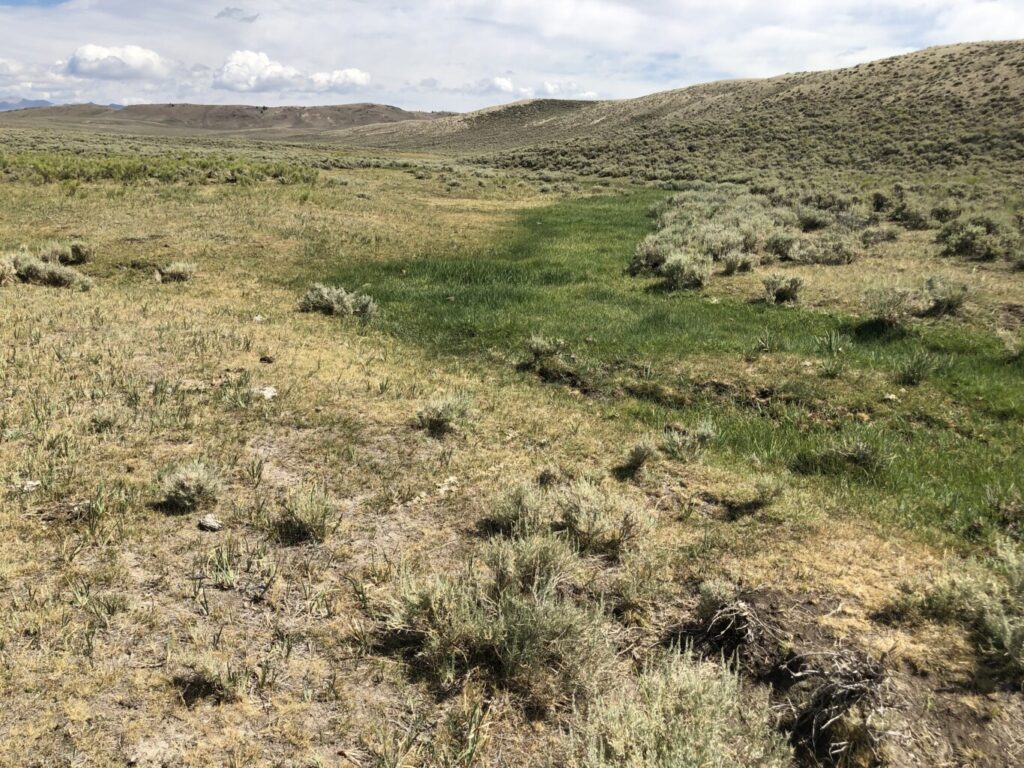
In the first study to directly relate climatic variability to sage-grouse, Nevada researchers found that climatic processes, as measured by annual rainfall and maximum summertime temperatures, had a strong relationship with chick production and adult survival. Annual variation in precipitation variables such as rainfall or snow depth explained up to 75% of the changes in sage-grouse population size during the study. Also, chick production was consistently low in cheatgrass areas even following years of favorable rainfall.
Recent research on Nebraska sharp-tailed grouse response to predicted increased temperatures across the Great Plains found that sharpies selected nest sites that reduced their exposure to high temperatures during the hottest part of the day. When temperatures hit 88 degrees grouse experience heat stress. Previous research has shown that daily nest survival rates for the similarly sized and related lesser prairie chicken are reduced by about 10% for every half-hour the temperature remains above 93 degrees and the sharp-tail study suggests available nest locations in the Nebraska Sandhills will be over 93 degrees for 6-9 hours depending on differing climate predictions. If temperatures continue to warm as predicted, available nesting habitat will shrink and survival and nesting success will likely decline.
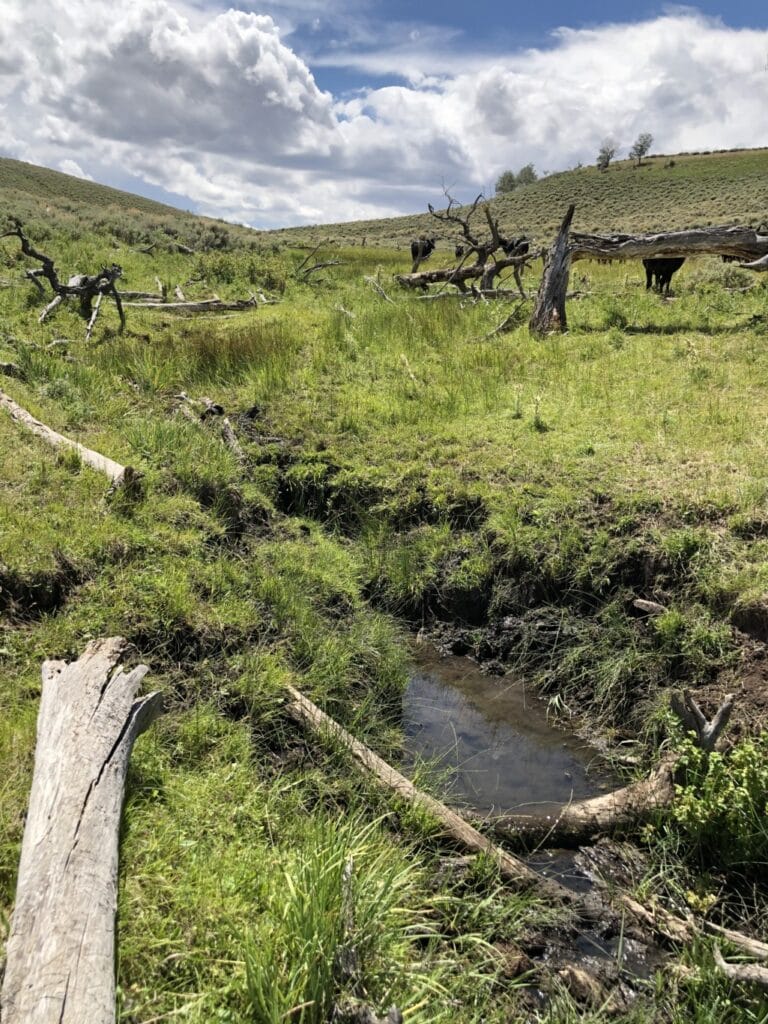
After a three-plus decade career monitoring and managing grouse and other wildlife and their habitats, this writer has observed the impacts of “unprecedented drought” or “climate change” (your choice). I’ve seen natural springs go dry, wet meadows contract reducing the amount of green forage they produce. I’ve seen vital desert aspen stands and mountain shrub communities invaded by conifers, over-used by livestock and wildlife, and eventually die. I’ve seen cheatgrass expand into areas previously thought immune. In addition to the impacts of human development and infrastructure, these slow but unrelenting changes to the landscape help explain why sage-grouse and sharp-tailed grouse have declined, along with mule deer, pronghorn, and many other species.
Hand Wringing or Action?
A global problem requires global solutions, but that doesn’t mean individuals can’t work locally in meaningful ways. In addition to being mindful of and working to minimize individual contributions to climate change, here are ways to help grouse and other wildlife deal with climate change:
- Stay informed. Check out the readings linked in the text and below.
- Volunteer to assist with habitat improvement projects such as low-tech riparian restoration, natural spring protection, and beaver dam analog installation.
- If volunteer opportunities are rare in your area, provide constructive written comments to land management agencies that support invasive plant species control, management of juniper encroachment, proper livestock grazing management, and an overhaul of the USDA’s Cropland Reserve Program to better address grouse habitat needs.
- Attend a local sage-grouse working group meeting.
- Offer to become a long-term volunteer to monitor sage-grouse or sharp-tailed grouse leks in the spring.
Other Suggested Reading
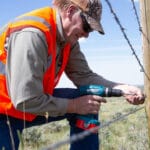
About The Author
Tom Christiansen served as a Wyoming Game and Fish Department wildlife biologist for 33 years, including a 15-year stint as the head of the agency’s sage grouse program prior to his retirement in 2018. Now living in Green River, Tom continues to be involved in wildlife conservation, especially the Greater Sage-Grouse and works with the Wyoming Wildlife Federation on grouse conservation projects.
